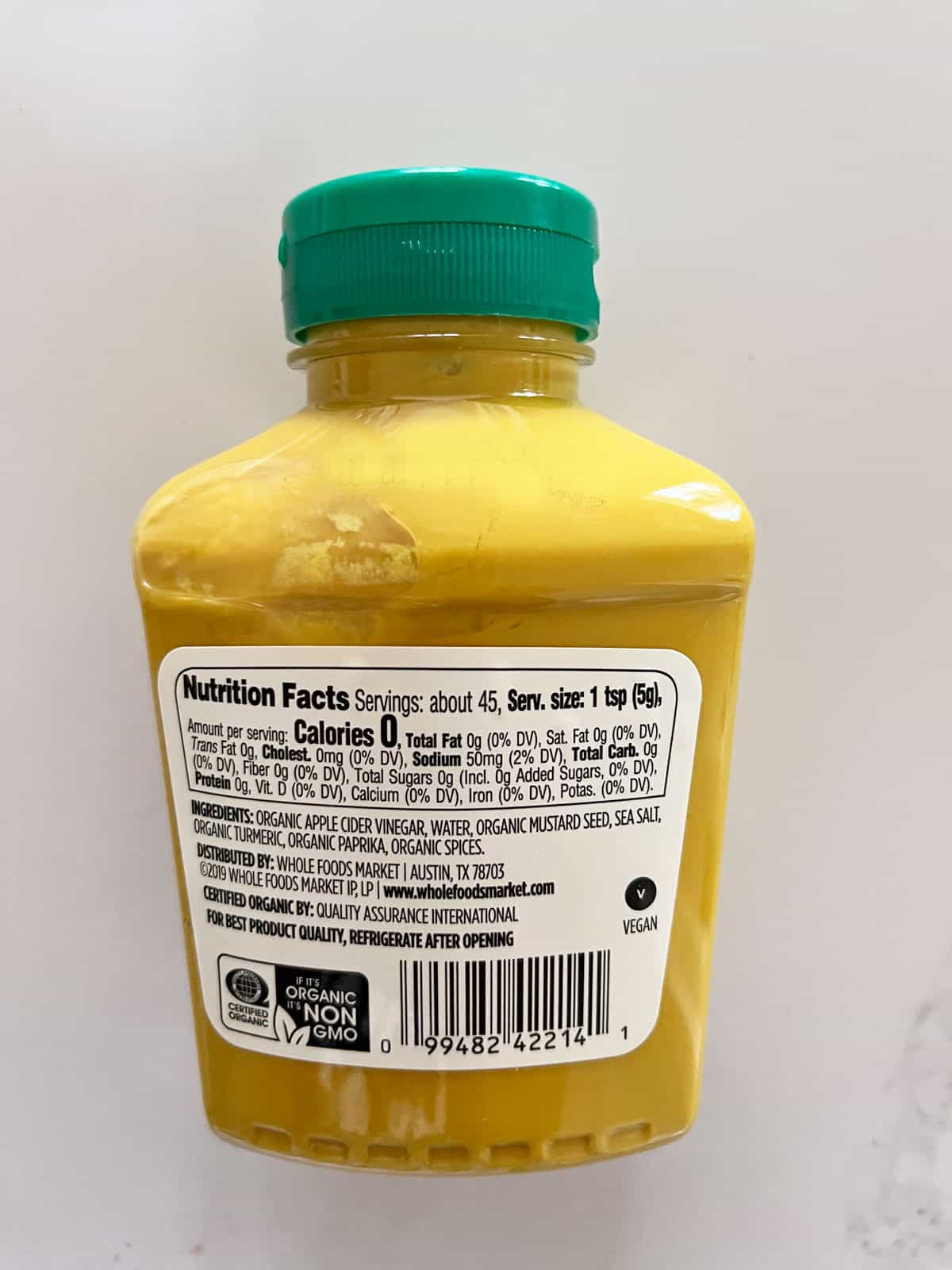If you've made any of my recipes that contain mustard, you probably noticed that I almost always recommend Dijon mustard. Here's why.
What is Dijon Mustard?
Dijon is a French mustard, which probably explains why it's so good. The French sure know their way around food! It comes from Dijon, a city in Burgundy in eastern France, hence its name.
What is Yellow Mustard?
Yellow mustard, also known as "American yellow mustard," was introduced to the American market in 1904 by George J. French. To this day, French's mustard is considered the classic yellow mustard.
Many say it's not as sharp and vinegary as other yellow mustards. I recently performed a taste test, comparing French's classic yellow mustard to a store brand yellow mustard (Whole Foods' 365 brand).
I concluded that, at least to my palate, they were very similar. When you taste a small spoonful, both start with a sharp, vinegary note, ending with a slightly bitter mustard seed note.

French's list of ingredients is similar to that of other yellow mustards: vinegar, water, mustard seed, salt, and spices. French's ingredients list also includes "natural flavor."

Dijon vs. Yellow Mustard
There's a BIG difference between these two mustards. They appear different. As you can see in the photo below, yellow mustard has turmeric, giving it a vibrant yellow color:

If you taste yellow mustard, the first and most prominent flavor note you'll notice is vinegar. It also smells of vinegar. Yellow mustard is very vinegary, and to me, it's unpleasant to eat by itself. It's OK only as a condiment.
On the other hand, if you taste Dijon mustard, you'll see that it's smooth, velvety, and surprisingly delicious on its own! Not that I expect you to eat it by the spoonful, of course. But taste it, and you'll see what I mean. It has a great flavor!
If you look at the ingredient list, you'll see that, indeed, the first ingredient in yellow mustard is vinegar, followed by water, mustard seed, salt, and spices.
In Dijon mustard, mustard seed is typically the second ingredient after water, and vinegar appears third on the list of ingredients. This explains the lack of vinegary taste. Mustard Seed is the star of the show here!


When To Use Yellow Mustard
Even though I'm a big fan of Dijon mustard and use it almost exclusively in cooking and as a condiment, there's one notable exception - hot dogs. If you're going to eat hot dogs, they do pair well with classic yellow mustard (although I've been known to serve them with Dijon, too).


 Vered DeLeeuw, LL.M., CNC, has been following a low-carb real-food diet and blogging about it since 2011. She's a Certified Nutrition Coach (NASM-CNC), has taken courses at the Harvard School of Public Health, and has earned a Nutrition and Healthy Living Certificate from Cornell University. Her work has appeared in several major media outlets, including Healthline, HuffPost, Today, Women's Health, Shape, and Country Living.
Vered DeLeeuw, LL.M., CNC, has been following a low-carb real-food diet and blogging about it since 2011. She's a Certified Nutrition Coach (NASM-CNC), has taken courses at the Harvard School of Public Health, and has earned a Nutrition and Healthy Living Certificate from Cornell University. Her work has appeared in several major media outlets, including Healthline, HuffPost, Today, Women's Health, Shape, and Country Living. 
Comments
No Comments